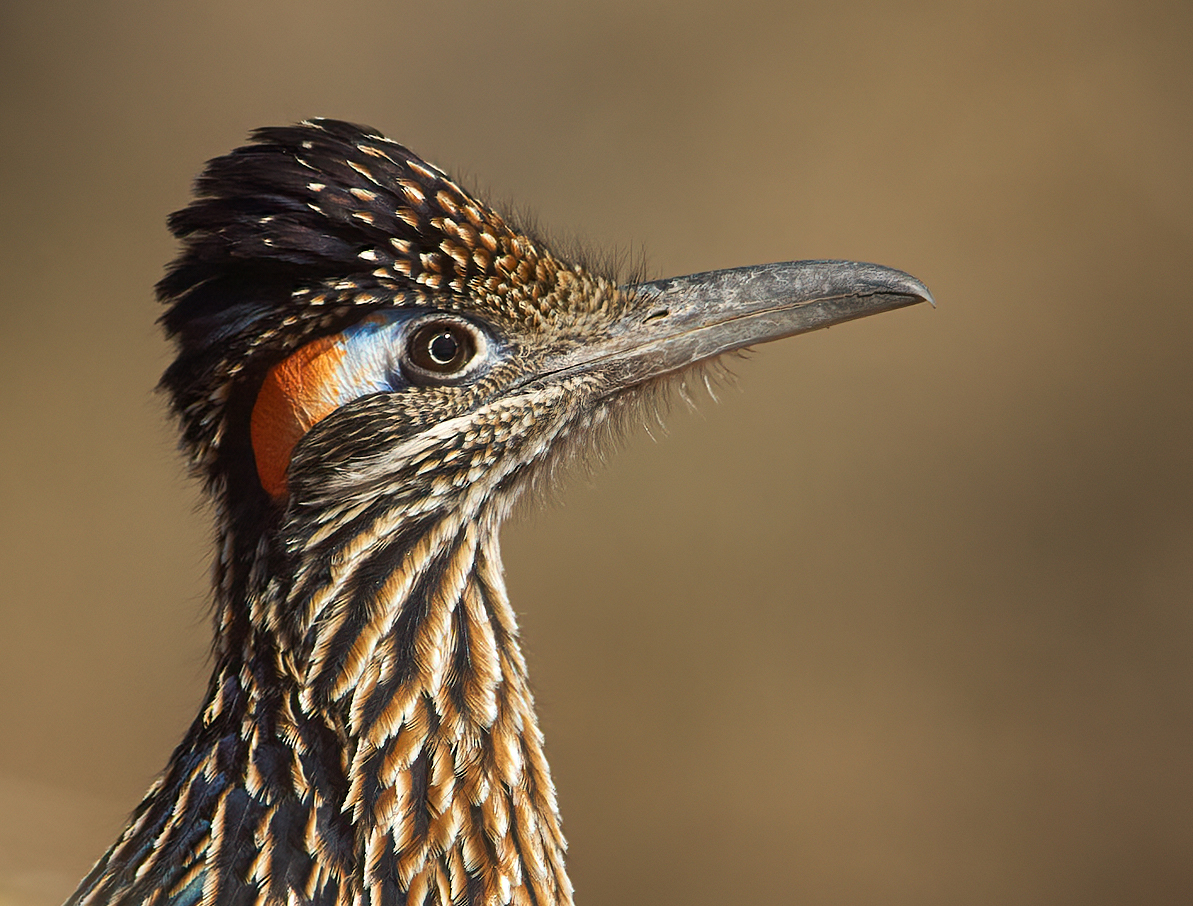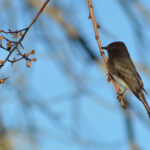By Kathleen M. McCoy
First published in Desert Rivers Audubon Magazine, Fourth Quarter 2024
What 20 inch slender bird that lives in the Sonoran Desert has long legs, long neck, and a very long tail? This peculiar animal, of course, is none other than the Greater Roadrunner (Geococcyx californianus.) Feathers that are mostly buff, with streaks of brown and black, provide perfect camouflage, but bare orange and blue skin around their eyes adds a little dash of color. Their feet have two toes in the front and two in the back (zygodactyl) producing X-shaped footprints so you can’t identify which way the speedster is going.
Appropriately named, this desert dweller, often seen darting along the roadsides, would rather run like a race car than fly. Their short, rounded wings can be used to fly but not very far or very well. These odd birds sprint along the ground hunting for food, but when in a hurry, have been clocked between 15 and 20 miles per hour. They are as patient as they are fast. They will wait or stalk cautiously when hunting for prey, sneak up, and then zoom in for the tasty treat…well, yummy to the hungry bird.
Roadrunners live to eat. George Sutton, distinguished ornithologist and bird artist, documented an adult in one day down 336 grasshoppers, 17 scorpions, 14 centipedes, two tarantulas and 132 other small beings, from moths to mice. They are omnivorous, that is, they eat fruit, seeds, insects, small birds, reptiles, and any animal dead or alive that fits in their mouth. In fact, the roadrunner has a superpower; the bird can eat poisonous prey, such as scorpions, venomous lizards, and rattlesnakes.
Having a rattlesnake dinner often involves teamwork. One roadrunner jumps and flaps, distracting the snake—and Surprise!—the other sneaks up, pins the snake’s head with its beak, and then in true roadrunner fashion, bashes the rattlers head on a rock or ground. Don’t be alarmed if you see a roadrunner with a dead rattlesnake hanging out of its beak. The snake was just too long to eat at once, and the bird is digesting this feast bit by bit.
Roadrunners have many adaptations for desert living. They deal with the scarcity of water by reabsorbing liquid from its waste and eliminating excess salt from its nasal gland. They cool off by spreading their wings to allow air to flow over their bodies. They will also pant to reduce heat. You can learn a lot more about these fascinating desert birds by visiting YouTube. Here’s one: https://bit.ly/MeetRoadrunner – Arizona Game and Fish, March 16, 2007








